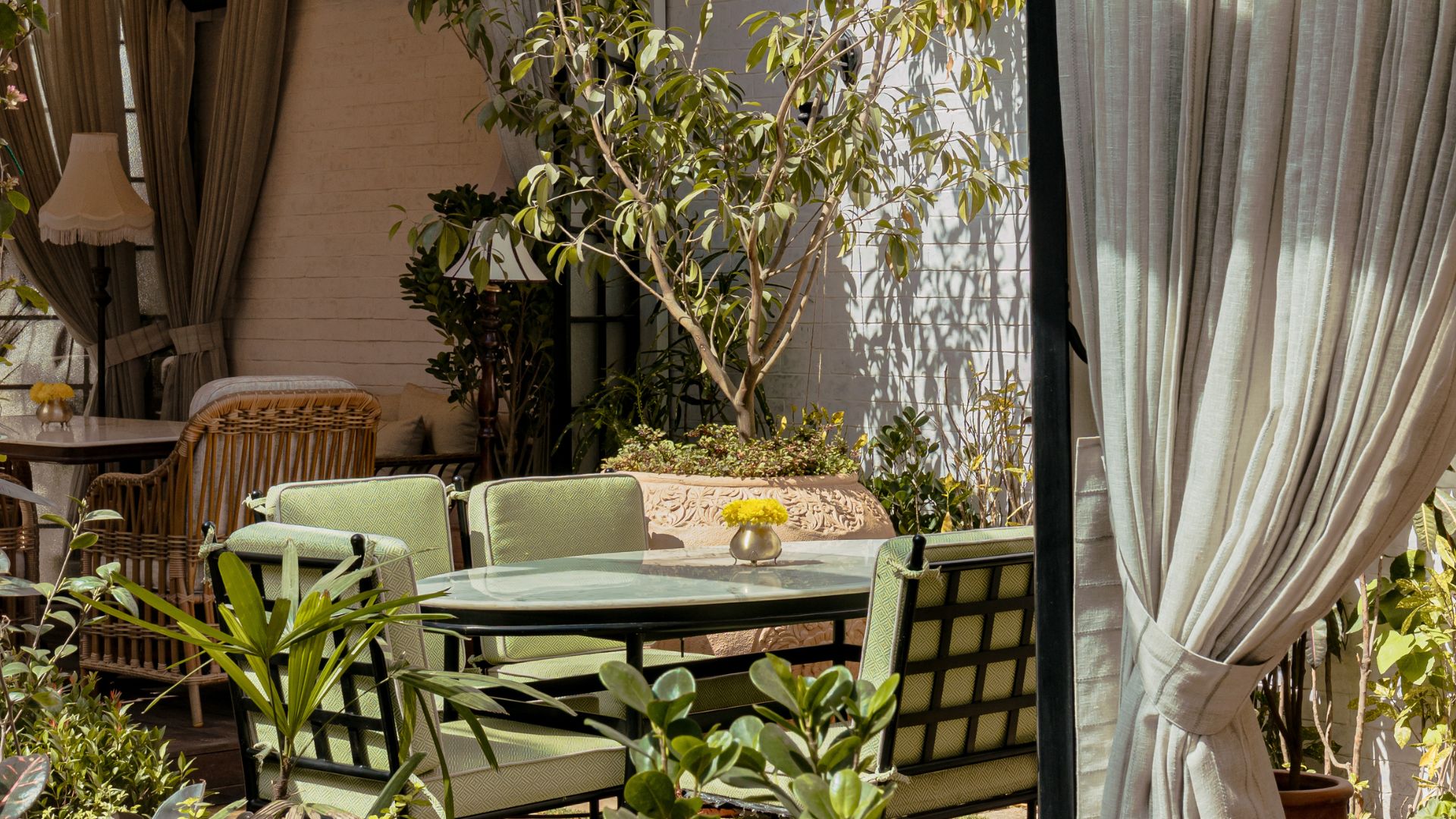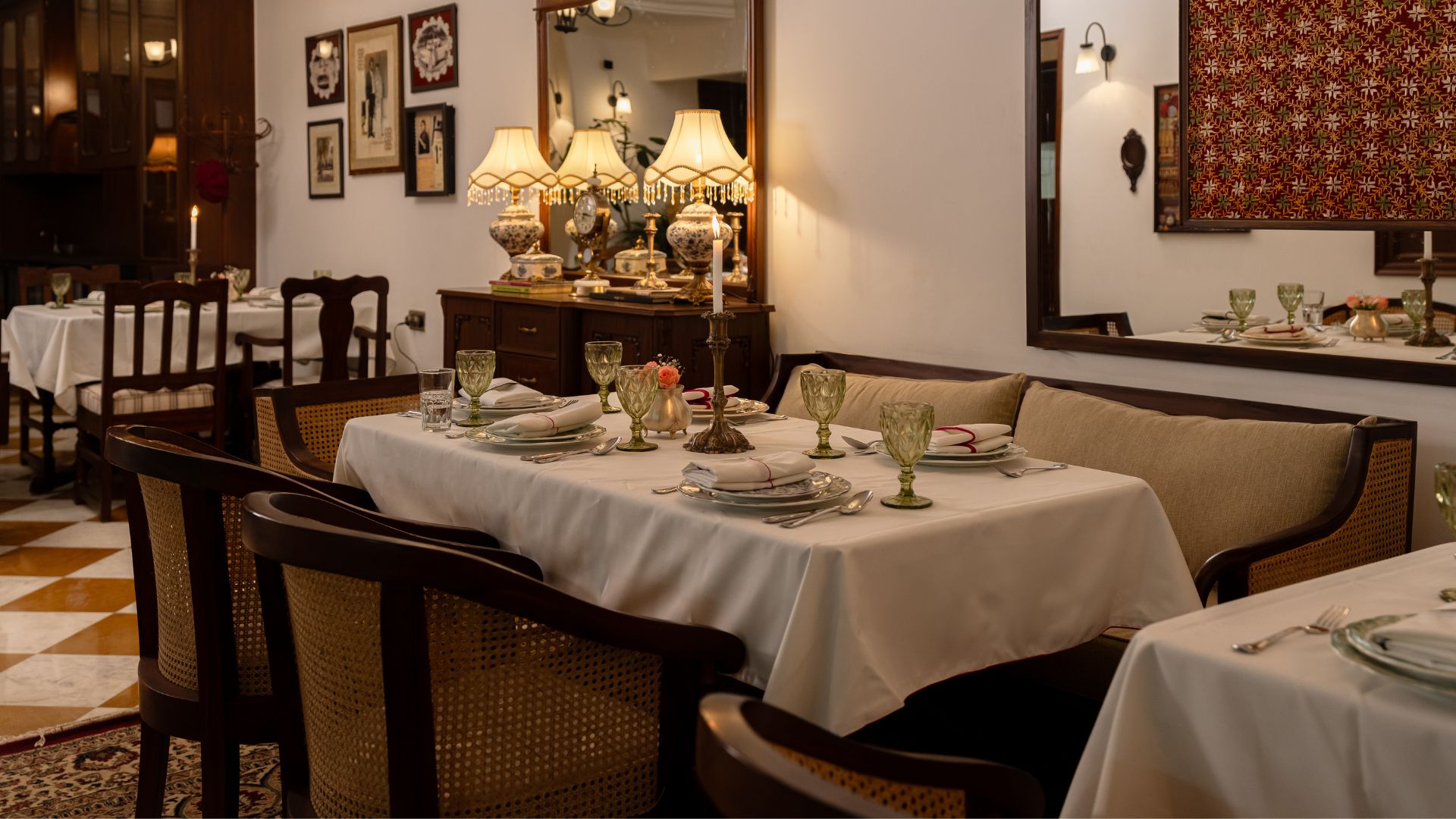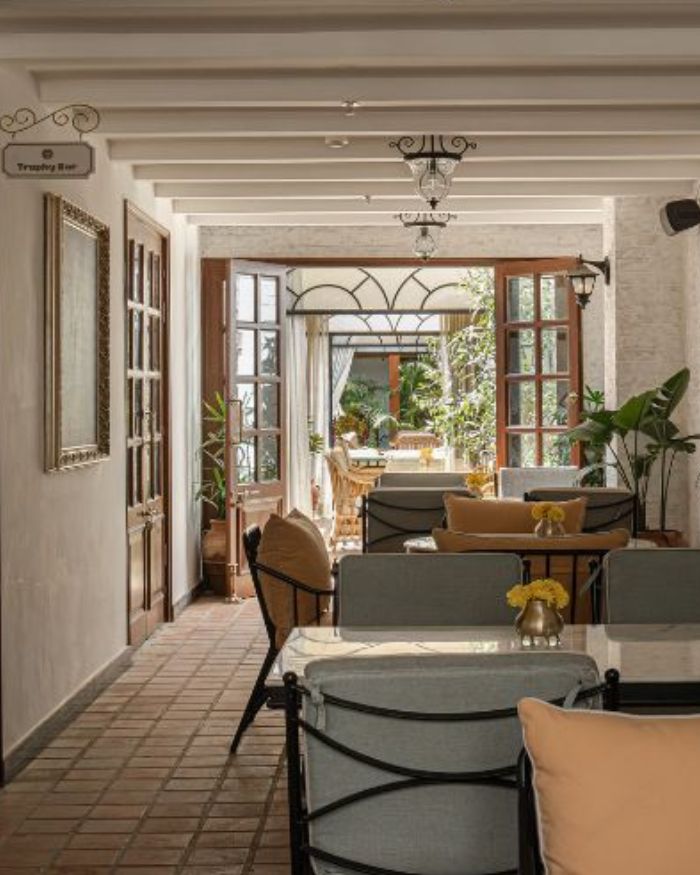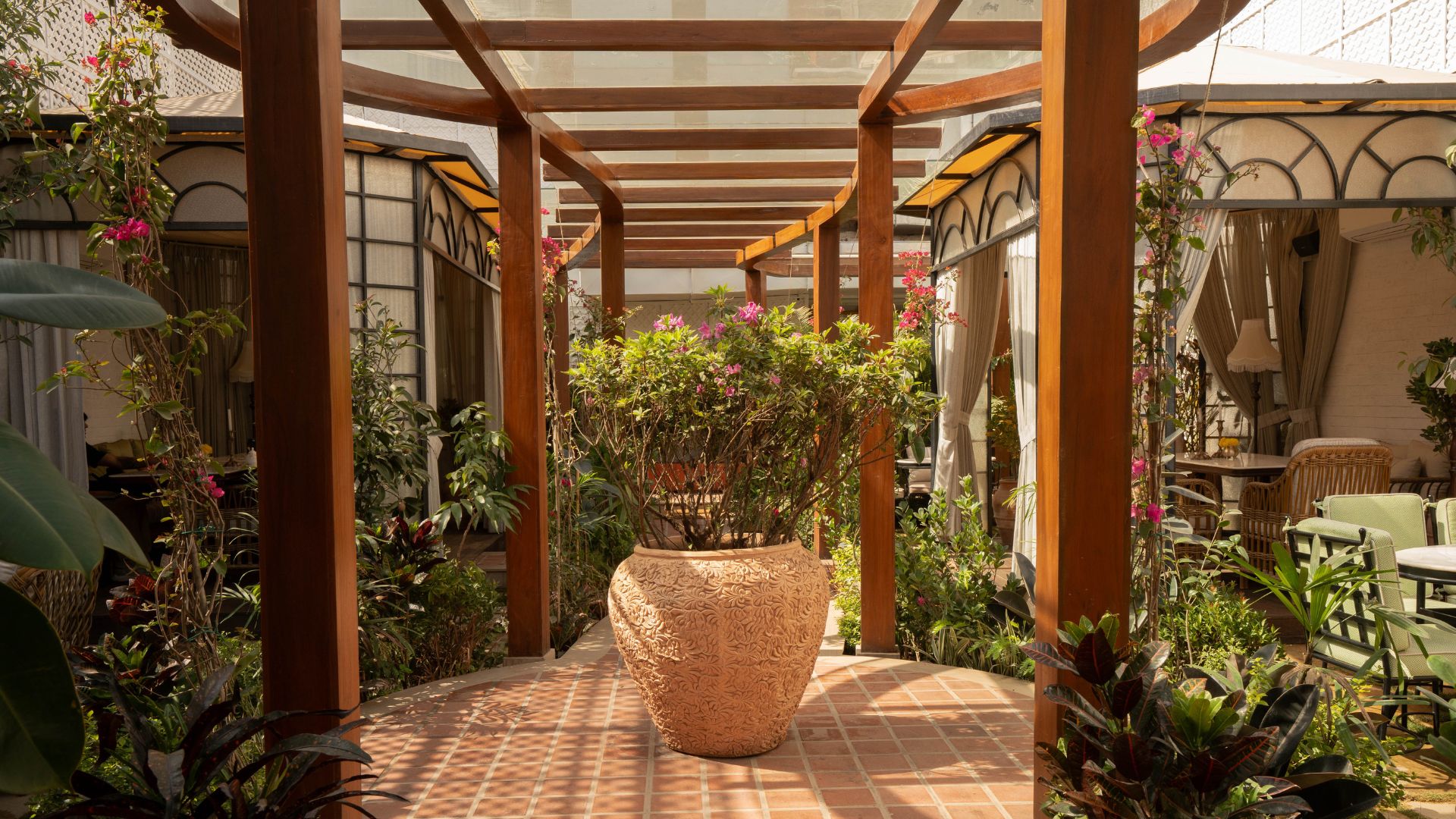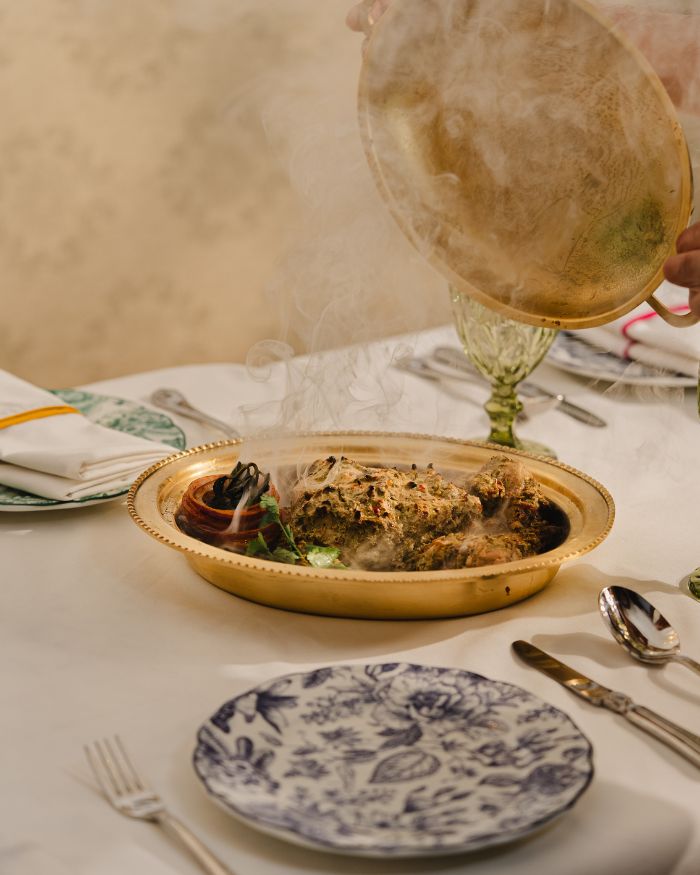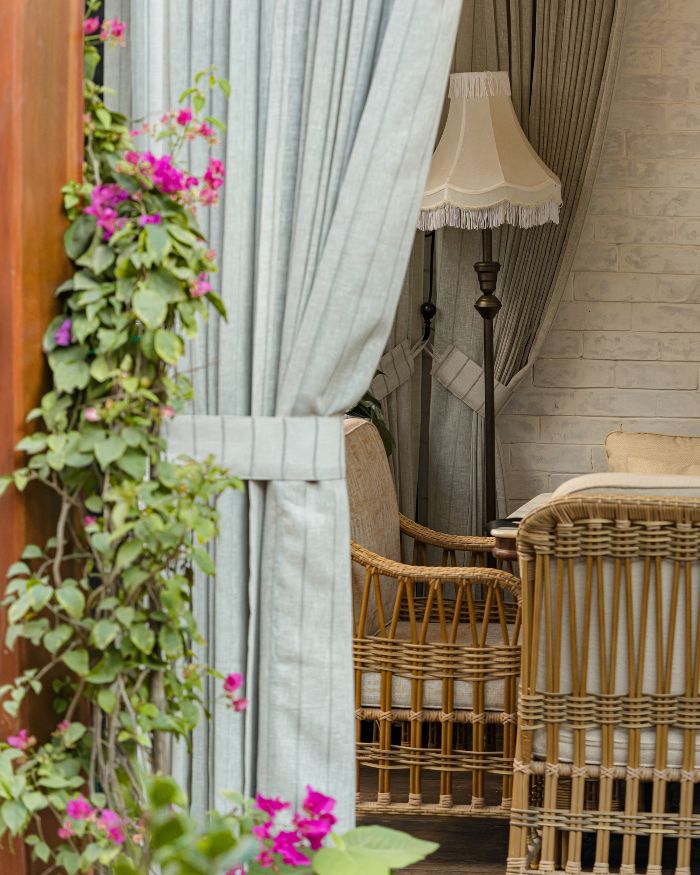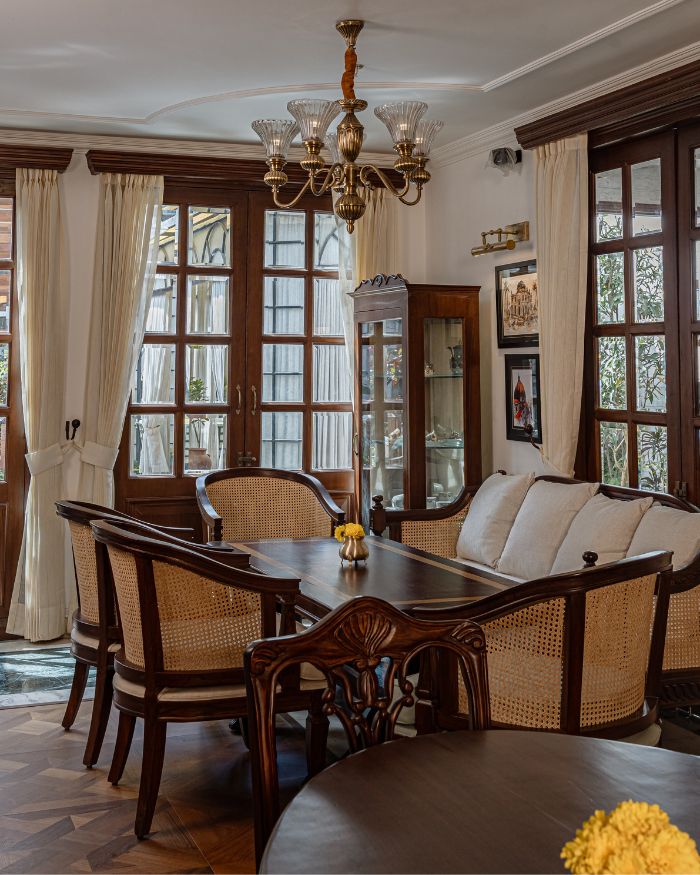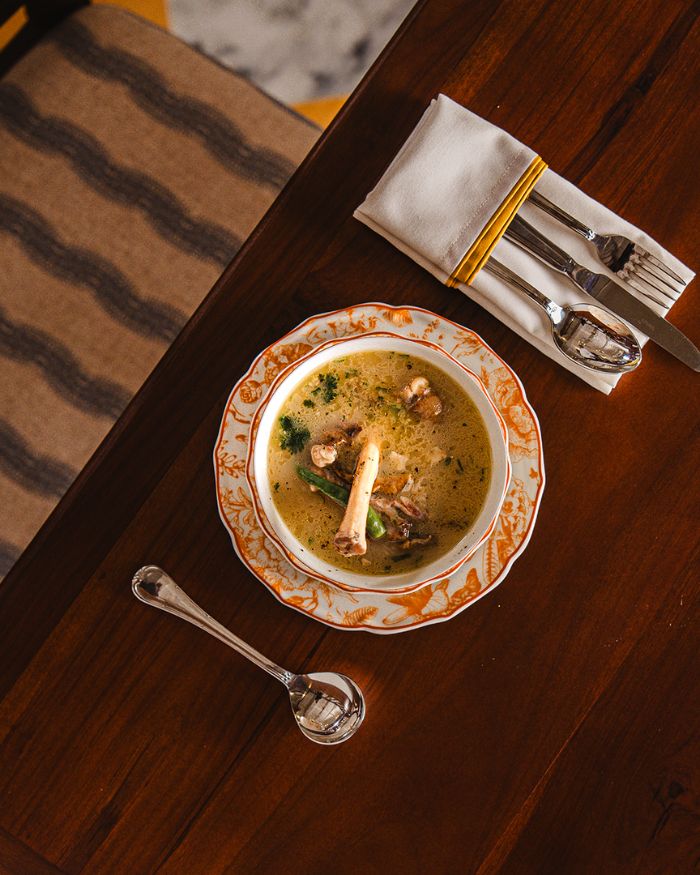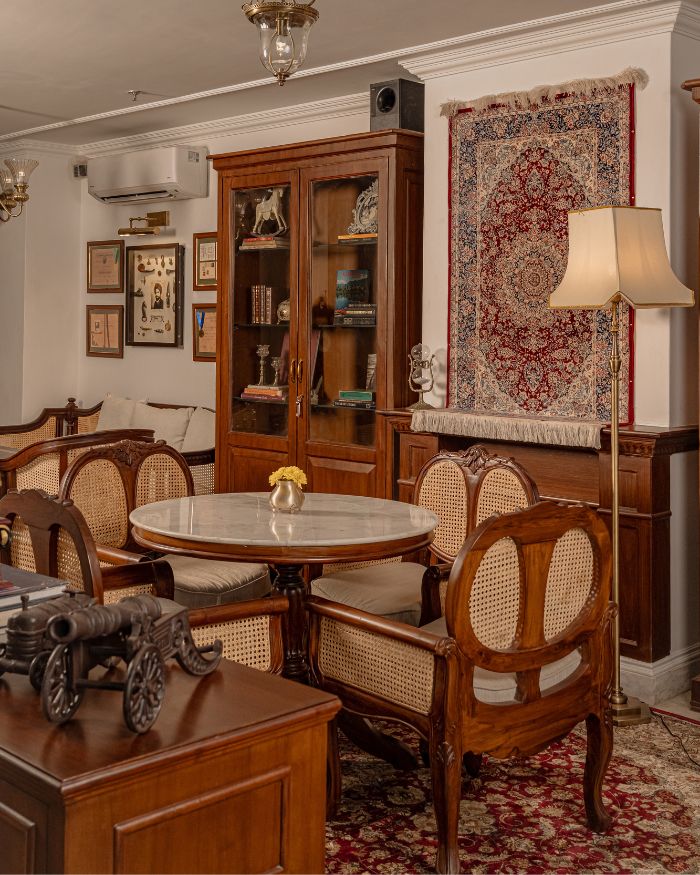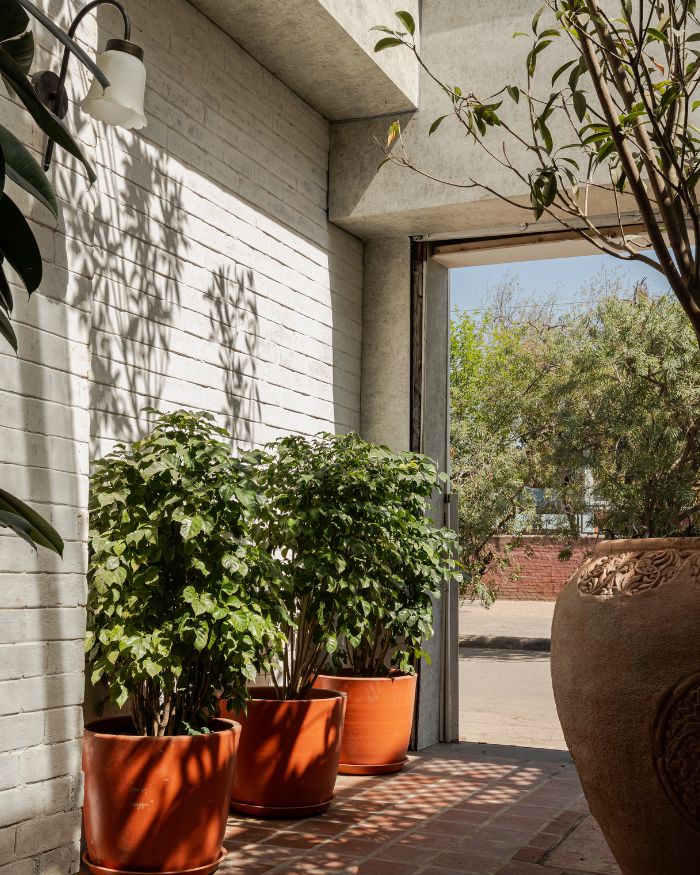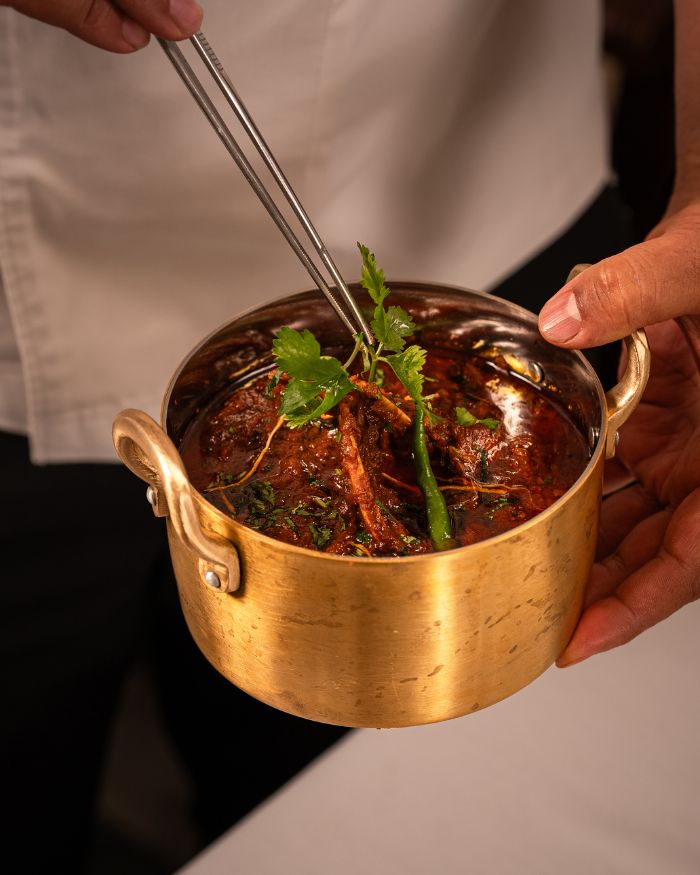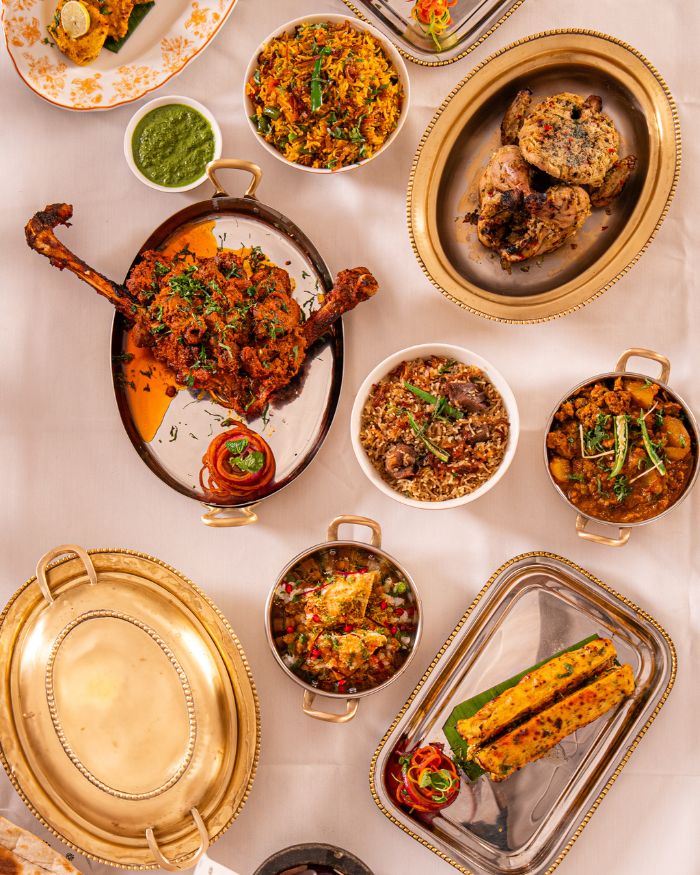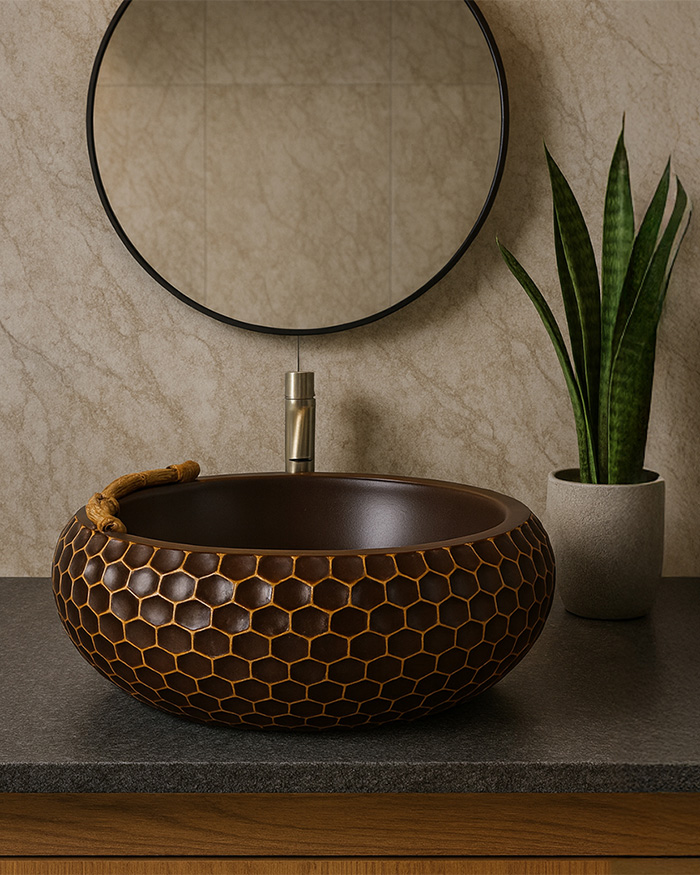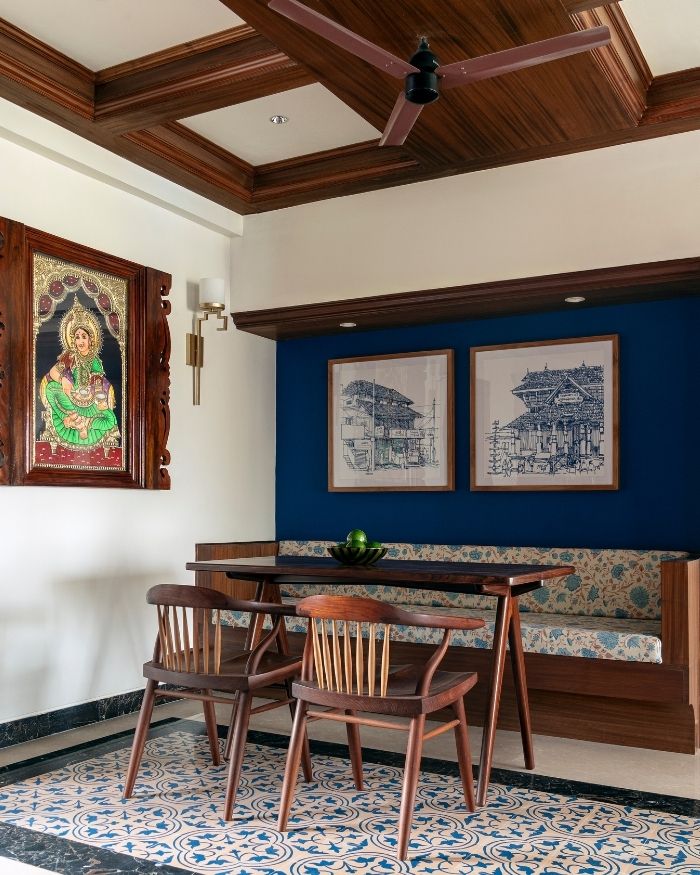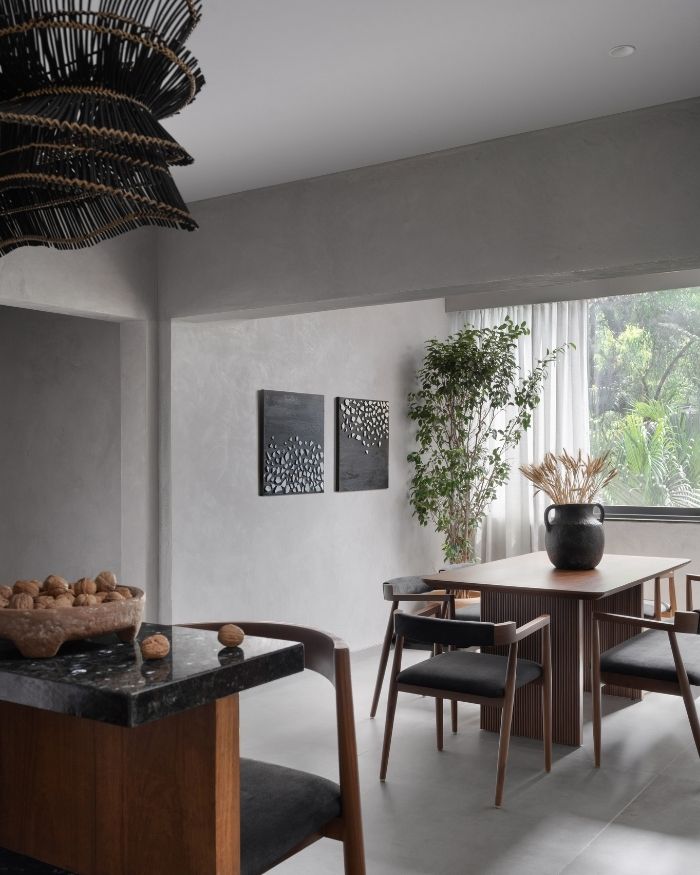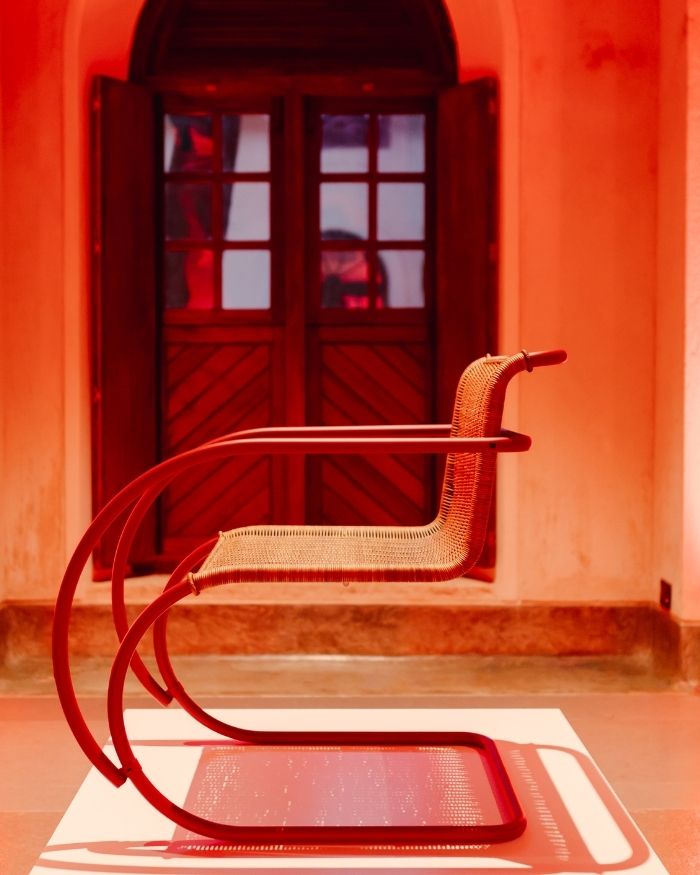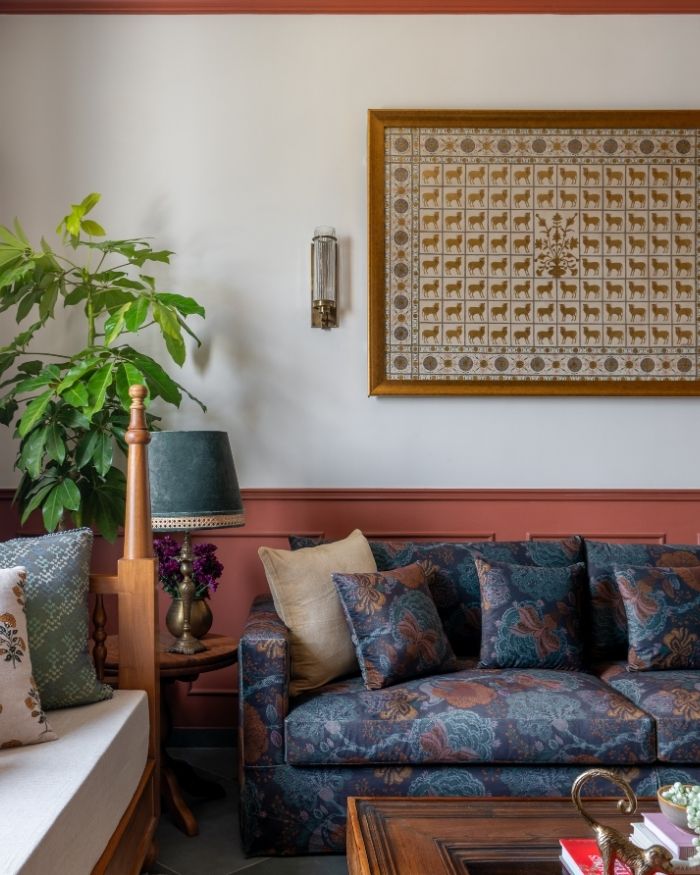Where the hearth is…
A city steeped in impressions of architect Le Corbusier’s modernist city plan and a colonial history, Chandigarh sits as a ground of various deep-rooted cultural vignettes. For Ikk Panjab, “Chandigarh was always on the cards — it’s not just geographically central and significant to the cultural essence that we represent, but emotionally too. The city is a meeting point of legacy and modernity, just like our cuisine,” says Vernika Awal, Brand Lead. With the indoors that seem to meld with the boundaries of outdoors, a bageecha-inspired seating area reminds of the nostalgic family courtyards overlooking curious objects like brass utensils, old locks, lanterns and such repurposed pieces. A textural statement in itself, lime-plastered walls, reclaimed polished wood, rattan seaters and handwoven textiles reassure of a bare yet layered montage of intentionality. “The idea was to build a space that feels lived in like time has passed through it,” says Rajan.
From Punjab’s kitchens
Time also finds itself alive and expressed inside the pages of Ikk Panjab’s menu; a mirror to the often unrevealed culinary faces of the undivided Punjab. Home-style cooking techniques, relishing street food and recipes from the royal courts (think gosht Beliram), “For too long, what has been marketed as Punjabi cuisine has largely been Delhi-centric, heavily influenced by Mughlai flavors. This interpretation does little justice to the depth and diversity of Punjab’s gastronomic heritage,” states Vernika. Of the many favourites on the menu, Matthi-Cholle stands out that they tell us is a homage to the founder Rajan’s grandmother. “As a child, he would be welcomed home with this comforting snack, a crisp matthi served with spiced chickpeas, a staple in every Punjabi household. Almost every home has a pippa (a large container) filled with matthi,” tells Vernika. Then there is Kotkapura Aata Chicken — a tribute to an iconic shop in Kotkapura, Punjab, which has been serving this delicacy for decades as a unique preparation where a whole marinated chicken is wrapped in dough and slow-baked. What comes out is a dish, beautifully tender and purely flavourful.
Reinstilling a regional identity and remapping its food history, the restaurant seemingly relies on the most sought-after and satiating experience of having a meal not a restaurant, but at one’s own home.

